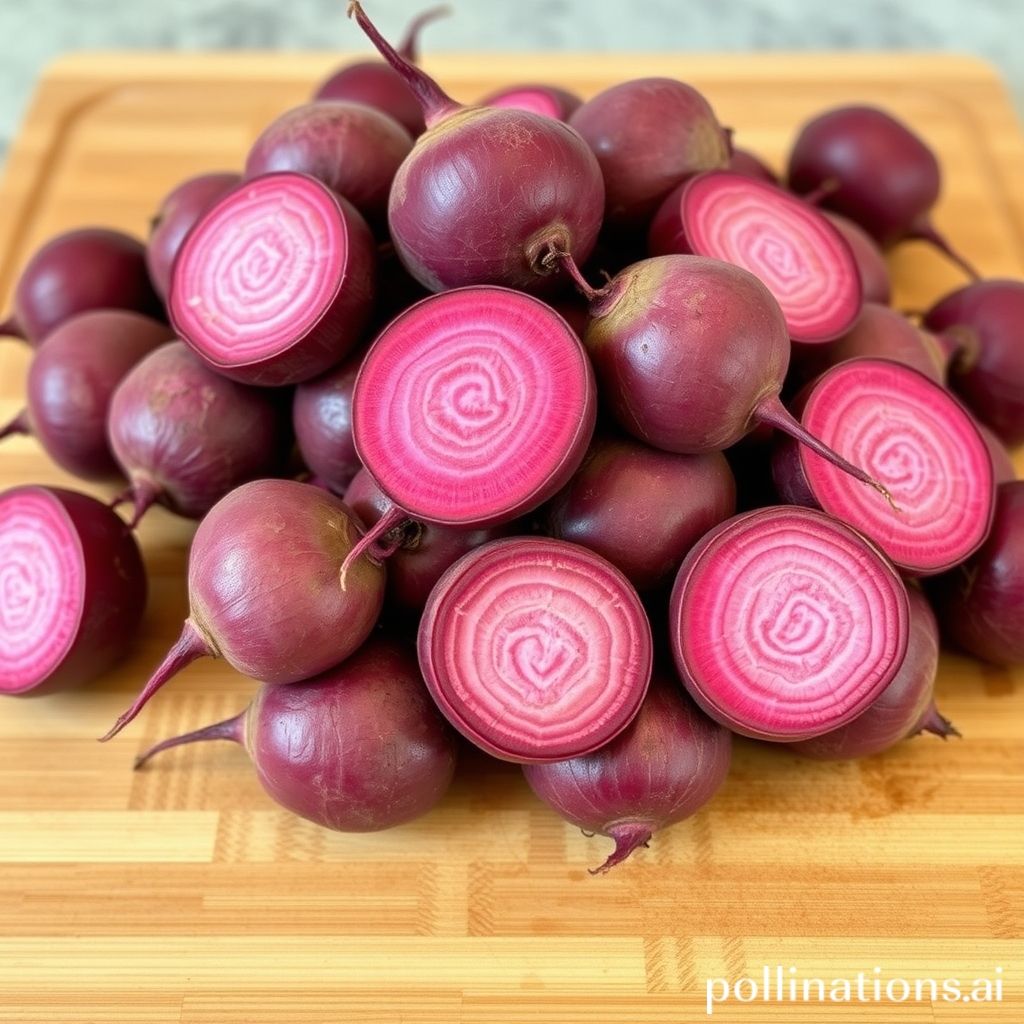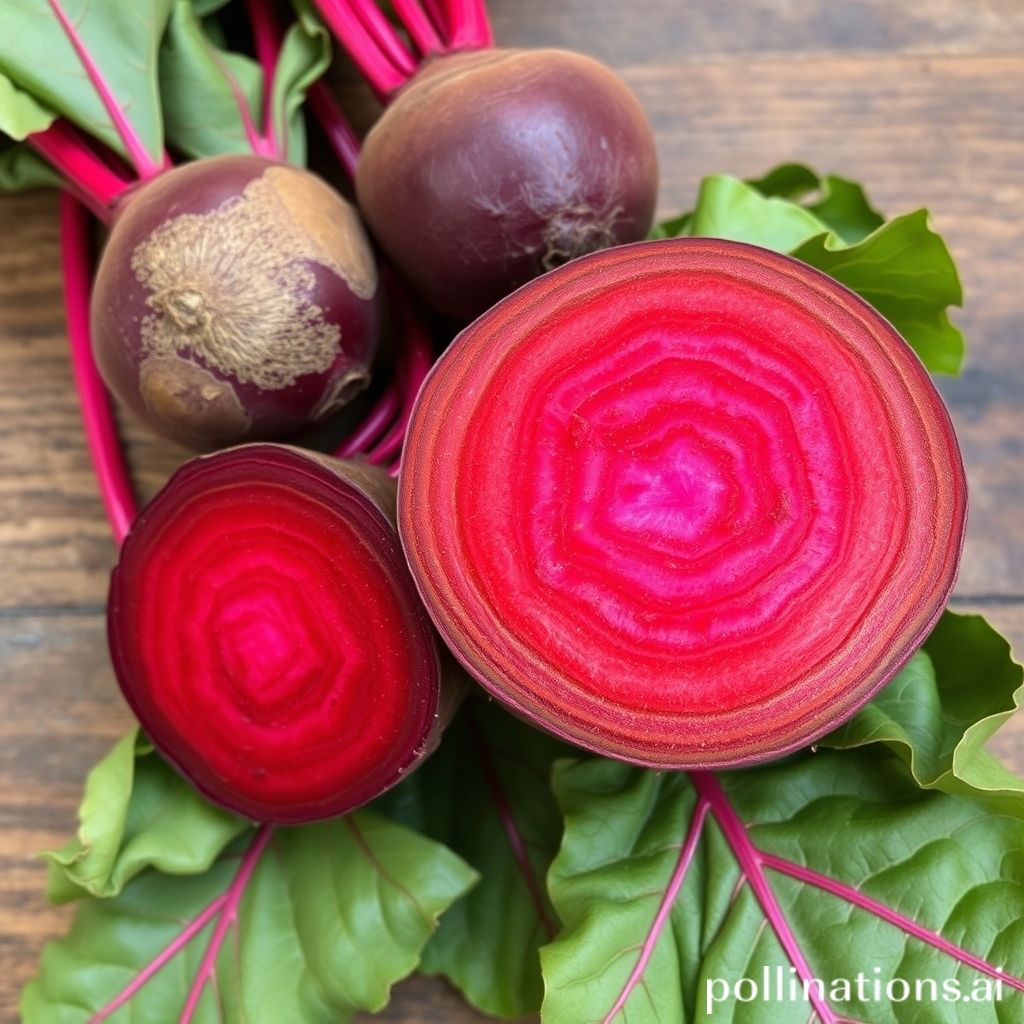Can You Eat Beets Without Peeling Them?
[su_note note_color=”#fb8e00″ text_color=”#000000″ radius=”12″]
Beets, with their vibrant color and earthy flavor, are a nutritious addition to any meal. Many people wonder if it’s necessary to peel beets before eating them, or if the skin is safe and beneficial.
This article will provide you with all the information you need about eating beets with their skin on. It will explore the safety of consuming the beet’s skin, any potential nutritional benefits it offers, and tips for incorporating beets with their skin into your diet. Whether you’re a beet enthusiast or simply curious about this root vegetable, read on to discover the answers to your questions.
[su_box title=”
[/su_box]

Nutritional Benefits of Beets
1. Rich in Antioxidants
Beets are packed with antioxidants, compounds that protect the body against damage from harmful free radicals. These free radicals can cause chronic diseases and accelerate aging. The antioxidants found in beets, like betalains and anthocyanins, have been linked to reducing inflammation, preventing oxidative stress, and potentially lowering the risk of certain cancers.
2. High in Vitamins and Minerals
Beets are a great source of essential vitamins and minerals. They contain vitamin C, which boosts the immune system and promotes collagen production for healthy skin. Beets are also rich in folate, a B-vitamin that is important for cell growth and development, especially during pregnancy. Additionally, beets provide minerals such as potassium, manganese, and iron, necessary for regulating blood pressure, supporting bone health, and aiding in oxygen transport.
3. Good Source of Dietary Fiber
Beets are a good source of dietary fiber, important for maintaining a healthy digestive system. Fiber adds bulk to the stool, promoting regular bowel movements and preventing constipation. It also helps control blood sugar levels, reduce cholesterol levels, and promote feelings of fullness, aiding in weight management. Including beets in your diet can contribute to meeting your daily fiber requirements and supporting overall gut health.
Incorporating beets into your meals can provide a range of nutritional benefits. From their antioxidant properties to their vitamin and mineral content, beets offer a variety of health-promoting qualities. Whether you choose to peel them or not, be sure to thoroughly wash and scrub the skin to remove any dirt or debris before consumption. So, next time you’re planning a meal, consider adding beets to your plate for a colorful and nutritious addition.
[su_highlight background=”#f6b40f”]Expert Tips: Boost your health with beets! Packed with antioxidants, vitamins, minerals, and fiber, they promote a healthy immune system, digestion, and gut health.[/su_highlight]
Safety of Consuming Beet Skin
Pertaining to enjoying beets, many people wonder if it is necessary to peel them before eating. The good news is that beet skins are safe to consume and can even provide some nutritional benefits. That being said, there are a few factors to consider to ensure the safety of consuming beet skin.
1. Organic and Pesticide-Free Beets
If you plan to eat beet skin, it is important to choose organic and pesticide-free beets. Conventionally grown beets may be treated with pesticides, and consuming the skin of such beets may expose you to these chemicals. Opting for organic beets ensures that you can enjoy the skin without worrying about harmful substances.
2. Proper Washing and Scrubbing
Prior to eating beets with the skin, it is crucial to wash and scrub them thoroughly. This helps remove any dirt, debris, or residual pesticides that may be present on the skin. Use a vegetable brush or your hands to gently scrub the beet skin under cool running water. This step helps ensure that you consume clean and safe beet skin.
3. Cooking Methods
Another way to enhance the safety of consuming beet skin is by cooking the beets. Cooking methods like boiling, roasting, or steaming can help soften the skin, making it easier to eat. Additionally, cooking can further reduce any potential contaminants present on the skin. That being said, if you prefer to eat raw beets, make sure to follow the aforementioned washing and scrubbing steps diligently.
To summarize, it is safe to eat beet skin as long as you choose organic and pesticide-free beets, wash and scrub them properly, and consider cooking methods to enhance safety. Through convergence beet skin into your diet, you can enjoy the nutritional benefits it offers, such as added fiber and antioxidants.
| Benefits of Consuming Beet Skin |
|---|
| 1. Added Fiber: Beet skins contain a significant amount of dietary fiber, which aids in digestion and promotes a healthy gut. |
| 2. Antioxidants: The skin of beets is rich in antioxidants, including betalains, which have been linked to various health benefits, such as reduced inflammation and improved heart health. |
| 3. Nutrient Retention: Cooking beets with the skin intact helps retain more of their nutrients, including vitamins and minerals. |
Benefits of Eating Beets with the Skin On
1. Retaining Nutrients
When you eat beets with the skin on, you retain a higher percentage of their valuable nutrients. The skin of the beet is rich in fiber, which aids in digestion and promotes a healthy gut. It also contains essential vitamins and minerals such as vitamin C, potassium, and manganese. By consuming beets with the skin intact, you can maximize the nutritional benefits they provide.
2. Enhancing Texture and Flavor
The skin of beets adds a unique texture and flavor to your dishes. When cooked, the skin becomes tender and complements the soft flesh of the beet. It adds a slight earthy and sweet taste, enhancing the overall flavor profile of your meals. By keeping the skin on, you can enjoy a more diverse and enjoyable culinary experience.
3. Reducing Food Waste
Eating beets with the skin on helps to reduce food waste. Many people often peel the skin off beets before cooking or consuming them, resulting in unnecessary waste. By utilizing the entire beet, including the skin, you can minimize your environmental impact and contribute to sustainable eating practices. Embracing the concept of “root-to-stem” cooking allows you to make the most out of your ingredients.

Cons of Eating Beets with the Skin On
Whilst some people may choose to eat beets with the skin on, there are several potential downsides to consider:
1. Potential Dirt and Bacteria
Eating beets without peeling them can expose you to dirt and bacteria that may be present on the skin. Beets are root vegetables that grow underground, and the skin can accumulate dirt and other contaminants during the growing process. Thoroughly washing the beets may help reduce the risk, but it does not eliminate it entirely.
2. Taste and Texture Preferences
The skin of a beet can have a slightly bitter taste and a tougher texture compared to the flesh. Some individuals may find the taste and texture unpleasant, especially if they are not accustomed to eating beets with the skin on.
3. Digestive Issues for Some Individuals
Beet skins are high in fiber, which can be beneficial for digestion. Although, for some individuals, consuming the skin may lead to digestive issues such as bloating, gas, or discomfort. If you have a sensitive digestive system, it may be best to peel the beets before eating them.
| Information |
|---|
| Eating beets with the skin on may expose you to potential dirt and bacteria. |
| The skin of a beet can have a slightly bitter taste and a tougher texture. |
| Some individuals may experience digestive issues when consuming beet skins. |
Whilst eating beets with the skin on is a personal preference, considering these potential drawbacks can help you make an informed decision based on your own taste and health considerations.
[su_note note_color=”#ea2e0c” text_color=”#ffffff” radius=”8″]Extra Tip: Consider peeling beets to avoid potential dirt, bacteria, and digestive issues, and to enhance taste and texture.[/su_note]
How to Prepare Beets with the Skin On
If you want a convenient and nutritious option, you can eat beets with the skin on. It not only saves time and effort but also adds vibrant color and unique texture to your dishes. Here are some methods to prepare beets with the skin on:
1. Thoroughly wash and scrub
Before cooking, make sure to wash and scrub the beets thoroughly to remove any dirt or debris. Use a vegetable brush to gently scrub the outer skin under running water. This step ensures that your beets are clean and ready to be cooked.
2. Roasting method
Roasting is a popular method for cooking beets with the skin on. Preheat your oven to 400°F (200°C) and line a baking sheet with parchment paper. Trim the tops and bottoms of the beets, leaving about an inch of stem intact. Place the beets on the prepared baking sheet, drizzle them with olive oil, and sprinkle with salt and pepper. Toss to coat. Roast the beets for 45-60 minutes, or until they are tender when pierced with a fork. Once cooked, allow them to cool slightly before peeling off the skin, which should come off easily.
3. Boiling method
If you prefer a quicker cooking method, boiling is an excellent option. Start by trimming the tops and bottoms of the beets, leaving an inch of stem attached. Place the beets in a large pot and cover them with water. Bring the water to a boil and then reduce the heat to a simmer. Cook the beets for approximately 30-45 minutes, or until they are tender when pierced with a fork. Once cooked, drain the beets and allow them to cool. Gently rub the skin with your fingers or a paper towel, and it should easily peel away.
Remember that leaving the skin on beets may slightly alter their taste and add a slightly earthy flavor. Despite this, the skin is safe to consume and provides additional dietary fiber and nutrients. Whether you choose to roast or boil your beets, incorporating them into your meals without peeling can be a delicious and nutritious choice.
Conclusion
It is safe to eat beets without peeling them. The skin of the beet is not only safe to consume but also provides numerous nutritional benefits.
By leaving the skin intact, you can retain a significant amount of fiber, antioxidants, and essential nutrients present in beets. That being said, make sure to wash them thoroughly to remove any dirt or debris. So, next time you prepare beets, consider keeping the skin on to enjoy its wholesome goodness and enhance your overall health.
FAQ about Eating Beets Without Peeling Them
FAQ 1: Is it safe to eat raw beets with the skin on?
Yes, it is safe to eat raw beets with the skin on. The skin of beets is edible and contains valuable nutrients such as fiber and antioxidants. That being said, make sure to wash the beets thoroughly to remove any dirt or impurities before consuming them.
FAQ 2: Can I eat the greens of beets?
Absolutely! Beet greens are not only safe to eat but also highly nutritious. They are packed with vitamins A, C, and K, as well as minerals like iron and calcium. You can enjoy beet greens by sautéing, steaming, or adding them to salads for a healthy and flavorful addition to your meals.
FAQ 3: How do I remove beet stains from my hands?
To remove beet stains from your hands, you can try rubbing them with lemon juice, vinegar, or a mixture of baking soda and water. Alternatively, you can wear gloves In the course of handling beets to prevent staining your hands in the first place.
FAQ 4: Can I eat beets if I have kidney stones?
Yes, you can eat beets if you have kidney stones. In fact, beets are a good source of dietary fiber and can help promote kidney health. That being said, if you have specific health concerns or dietary restrictions, it is always advisable to consult with your healthcare provider before making any significant changes to your diet.
FAQ 5: Are there any allergies or sensitivities to be aware of when consuming beets?
In the course of rare, some individuals may experience allergies or sensitivities to beets. Symptoms can include itching, swelling, or difficulty breathing. If you have a known allergy to beets or other root vegetables, it is best to avoid consuming them. If you are unsure, it is recommended to consult with a healthcare professional for personalized advice.

